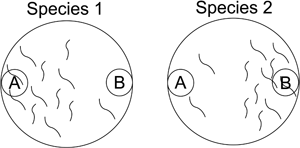Article contents
Chemotactic and temperature-dependent responses of the Strongyloidoidea superfamily of nematodes
Published online by Cambridge University Press: 05 October 2021
Abstract

Host-seeking behaviour and how a parasite identifies the correct host to infect remains a poorly understood area of parasitology. What is currently known is that host sensation and seeking behaviour is formed from a complex mixture of chemo-, thermo- and mechanosensory behaviours, of which chemosensation is the best studied. Previous studies of olfaction in parasitic nematodes suggested that this behaviour appears to be more closely related to target host and infection mode than phylogeny. However, there has not yet been a study comparing the chemotactic and temperature-dependent behaviours of very closely related parasitic and non-parasitic nematodes. To this end, we examined the temperature-dependent and chemotactic responses of the Strongyloidoidea superfamily of nematodes. We found differences in temperature response between the different species and within infective larvae. Chemotactic responses were highly divergent, with different attraction profiles between all species studied. When examining direct stimulation with fur, we found that it was insufficient to cause an attractive response. Overall, our results support the notion that olfactory sensation is more closely related to lifestyle and host range than phylogeny, and that multiple cues are required to initiate host-seeking behaviour.
Keywords
- Type
- Research Article
- Information
- Copyright
- Copyright © Max-Planck Institute for Developmental Biology at Tübingen, 2021. Published by Cambridge University Press
References
- 3
- Cited by





